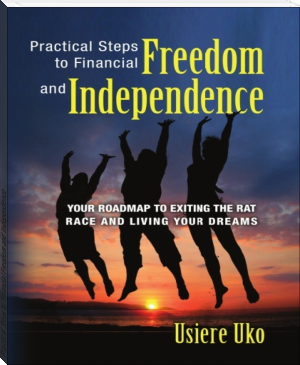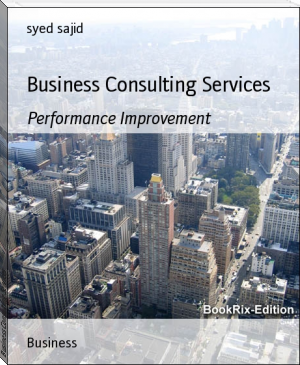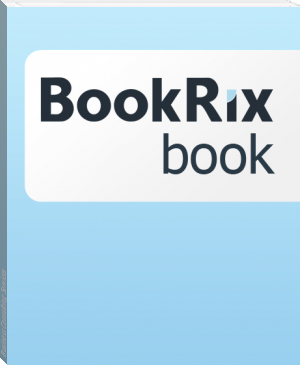Domain Sniper, Shane Purcell [learn to read activity book txt] 📗

- Author: Shane Purcell
Book online «Domain Sniper, Shane Purcell [learn to read activity book txt] 📗». Author Shane Purcell
Shane Purcell Presents
Domain Sniper
http://mentorman.linktrackr.com/Ultimate.Traffic.Secret
Sponsored By My
My Ultimate Traffic Secret..
http://mentorman.linktrackr.com/Ultimate.Traffic.Secret
http://mentorman.linktrackr.com/Ultimate.Traffic.Secret
LEGAL NOTICE
The Publisher has strived to be as accurate and complete as possible in
the creation of this publication, notwithstanding the fact that he does
not warrant or represent at any time that the contents within are
accurate due to the rapidly changing nature of the Internet.
In practical advice books, like anything else in life, there are no
guarantees of income made. Readers are cautioned to reply on their
own judgment about their individual circumstances to act accordingly.
This book is not intended for use as a source of legal, business,
accounting or financial advice. All readers are advised to seek services
of competent professionals in legal, business, accounting, and finance
field.
Perceived slights of specific people or organizations are unintentional.
You are encouraged to print this book.
http://mentorman.linktrackr.com/Ultimate.Traffic.Secret
Public Domain
Public Domain is the vast body of material that includes books, photos, music
and information that is available for the public to use and republish...free.
All of this is normally protected by copyright laws, but copyright protection is not
forever. Intellectual property that is not covered by copyright laws belongs to the
public domain. Therefore, it is open to everyone who wants to use it. And that
can mean serious financial gain for you.
How Do You Know If a Work is Public Domain?
Copyright laws vary from country to country. In the United States, there are three
general rules that you need to follow to help you assess potential public domain
works.
RULE #1: Works published in the United States before 1923 are considered
public domain.
This rule is cut and dry. There are no exceptions. If the work was published,
created, or produced prior to 1923, then it is in the public domain.
RULE #2: Works created after March 1, 1989, even if not published, are
copyright protected for 70 years after the author’s death. Works made for
hire (corporate authorship) after March 1, 1989 are copyright protected for
120 years from creation or 95 years from publication, whichever is sooner.
This rule, of course, means that you do not have to actively file for copyright
notice to come under the protection of the copyright law. Under this rule, all
creative work produced after March 1, 1989 is automatically covered.
The phrase “works made for hire” actually refers to publications issued for and by
a corporation so the legal author turns out to be the employer or corporation.
That is why they are sometimes collectively referred to as “corporate authorship”
and may include anything from newsletters to employee manuals, annual reports
and instructional texts.
Works made for hire may also cover any situation wherein a creative professional
is paid to produce a work within the scope of his own employment.
RULE #3: Works published in the United States between 1923 and March 1,
1989 are also copyright protected, provided the formalities are observed.
http://mentorman.linktrackr.com/Ultimate.Traffic.Secret
These formalities include notice of copyright, registration, and/or renewal. Failure
to observe these formalities means the work is in the public domain. On the other
hand, if you comply with the requirements, then your work is under copyright
protection.
So, to summarize, you know that a particular work falls into the public domain if it
comes under any of the following conditions:
•
Published before 1923
•
Published between 1923 and 1978 without a valid copyright notice
•
Published between 1978 and March 1, 1989, without a notice and
registration
•
Published between 1923 and 1963 with a copyright notice but author
failed to renew it (According to a report, only 7% of copyrights issued
through 1958 were renewed)
However, a work is not public domain if any of the following conditions apply:
•
Published between 1923 and 1963 with a copyright notice, properly
renewed before its expiration for the first 23-year protection term
•
Published between 1963 and March 1, 1989 with a valid copyright notice
•
Published or created any time after March 1, 1989 (Works after this date
are deemed automatically under copyright protection)
Where Can You Find Public Domain Work?
There are two basic methods for finding public domain work.
The first is classic DIY or do-it-yourself. This method is not very fast and will
probably not yield that many results, but it will cost you virtually nothing. The
other method is the paid way, wherein you pay a third party to do the research
for you.
Whichever you prefer, you may still want to know how to locate public domain
work on your own.
http://mentorman.linktrackr.com/Ultimate.Traffic.Secret
Internet
Start by searching for keywords and phrases like:
o
public domain music
o
public domain images
o
public domain books
o
public domain movies
o
public domain works
o
public domain library
o
public domain software
**A word to the wise --Don't trust everyone. Information from the
Library of Congress is reliable. If you're doing the research yourself, it's in
your best interest to contact a copyright lawyer before you publish the
work, just in case it falls outside the copyright laws.
· Talk it Out
Besides regular websites, public domain works are also available in
boards with public posting access, e.g. forums, message boards, and e-
groups. Just do a search for “public domain forum,” substituting “forum”
with message boards, list, group, news, community, etc.
**Just remember: Before you join any group, forum, or community,
browse through the forum posts and member profiles first to determine if
the members are easy to talk with and are not averse to answering
questions (okay, a lot of questions) from newbies.
· Go Right to the Source
When you do your search for public domain works, you will find that many
libraries and groups offer you a wide range of creative work in the public
domain. Countless copies of work without copyright protection are
digitized, archived in online databases, and made freely available to the
public.
http://mentorman.linktrackr.com/Ultimate.Traffic.Secret
According to them, this helps ensure the information is freely available to
scholars, educators, students, and the general public.
Start your search using the following resources:
o
www.Bartleby.com – For a collection of online reference books, this
site is the place to go. It also contains literature (fiction and non
fiction), verse, quotations, and books in the public domain.
o
www.Ibiblio.org – A collaborative project between the University of
North Carolina – Chapel Hill’s MetaLab and the Center for the
Public Domain, Ibiblio.org is a database of freely available
information, including software, music, literature, art, history,
science, politics, and cultural studies.
o
www.ReadPrint.com – As a free online library, this site offers
thousands of free books that a student, teacher, or even the classic
enthusiast can use completely without charge. It has an author
index which allows you to read free biographical information about
them.
o
www.Gutenberg.org – Approximately 18,000 free public domain e-
books are available.
The Traditional Way
Public libraries are often a treasure trove of public domain work. Often the staff
will be able to direct you to the resources you're looking for. Browsing through the
card catalog will also turn up golden nuggets, as they usually contain the date of
publication.
After finding the public domain materials you need, you are now ready for the
next step, which is preparing this work for resale. One of the proven packaging
methods to re-sell public domain works is through an e-book.
An e-book is a term that refers to a digital version of a book.
How to Create an E-Book
Creating an ebook is simple. You can scan a physical book, compile the scans
and transfer them to a PDF file, or you can hire a freelancer to transcribe the
book in Word or another data processing program, so you can turn that into a
PDF file.
http://mentorman.linktrackr.com/Ultimate.Traffic.Secret
The beauty of e-books is they can be easily downloaded from the Internet,
whether direct from a website or as an email attachment. However, downloading
can be slow for some consumers, especially if they are not using a broadband
connection.
E-books that are particularly long can take quite a long time to download and can
be a source of hassle for your consumers. Aside from cutting your e-book into
mini, easy to download file sizes (which would totally defeat the whole purpose of
having an e-book for a product in the first place), the best option you have is to
zip your e-book into an archive. This will compress your e-book into a smaller
file and will make it easy to download.
You can download free PDF software from www.Software995.com
How to Turn E-Books into Money-Making Machines
Your public domain work can be used to make money in a variety of ways. Take
your inspiration from these well known stories:
Walt Disney
Walt Disney has made a billion dollar fortune on timeless stories that we have
always loved. His entire empire is built on characters from these stories, making
everything from movies, TV shows, songs, music, theme parks, and so much
more.
His source? The Grimm Brother’s Collection of Fairy Tales – a public domain
work. Disney simply copied them, tweaked the characters’ names, rewrote a
happy ending, slapped the whole thing on a piece of film, added some music,
and voila! He opened a whole new world of magic while he made profit out of it.
Ted Turner
Turner Classic Movies (TCM), a cable network that earns millions of dollars a
year in gross profits, broadcasts classic films that have long since entered the
public domain, Ted Turner only pays a very minimal cost when broadcasting.
This is a far cry from other broadcast stations who must shell out millions to pay
for royalties and other fees.
As a shrewd businessman, Ted Turner saw the opportunity of a lifetime that
public domain offered – re-distributing copyright-free works and earning a fortune
for his effort.
http://mentorman.linktrackr.com/Ultimate.Traffic.Secret
You will find many more examples of rags-to-riches stories around public domain
re-selling. Who said this kind of stories only exist in fairy tales? You can create
your own fairy tale, too, by turning public domain ideas into dollars.
After choosing one or two works from





Comments (0)